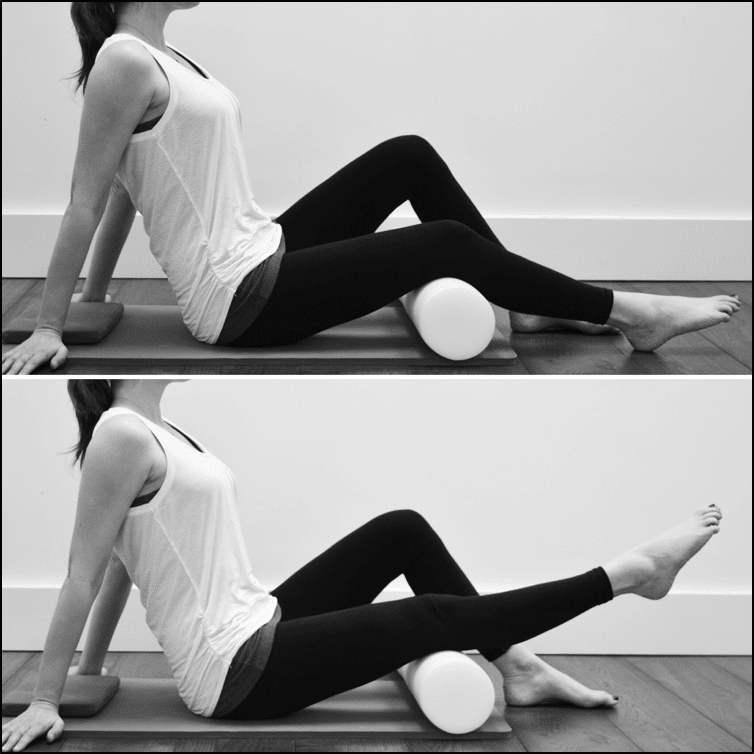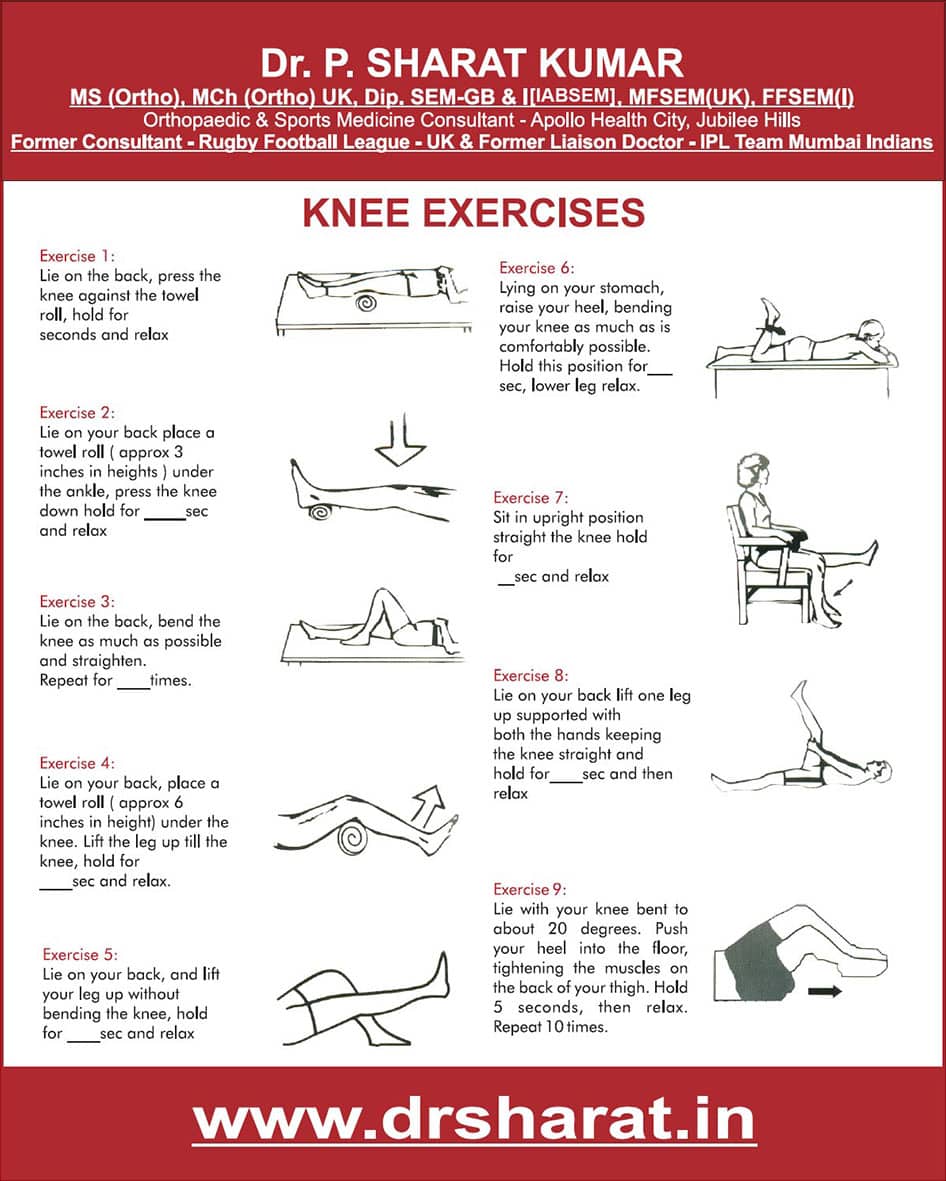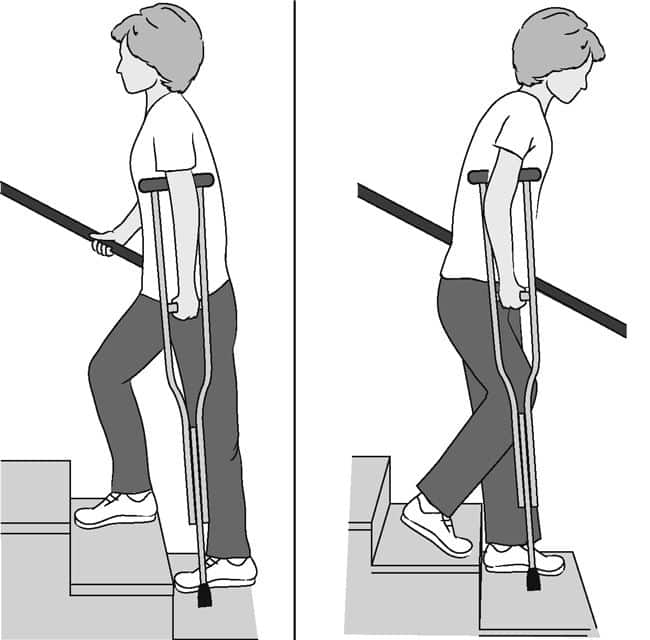One Of The Most Important Goals After A Total Knee Replacement Is To Adequately Strengthen The Surrounding Muscles To Improve The Joints Stability And To Advance Your Exercises As Your Knee Strength Progresses
After your operation, you might feel less stable standing on the operated leg. There are three reasons for this feeling:â1: There are two main ligaments deep inside the knee joint The anterior cruciate ligament and posterior cruciate ligament . The PCL is sometimes spared but may be weakened after surgery while the ACL is completely removed.2: The new joint surfaces are not the exact replica of your natural knee and may feel wobbly.3: There is often decreased muscle strength from inactivity beforehand and from the surgery itself.âOf these three factors of joint instability, there is one major factor that we can improve – you guessed it, strengthening! You need to exercise and strengthen two main muscle groups to stabilize your knee. They are the quadriceps and hamstrings! The âquadâ group is a set of 4 muscles in the front of the leg that starts at the hip and finally attaches to an area just below the kneecap. These muscles are primarily responsible for extending, or straightening the knee. The hamstrings are a set of 3 muscles that start at your sit bones in your buttocks and attach to the back of your knee. These muscles are primarily responsible for flexing, or bending the knee.
The solution is to strengthen these muscle groups, giving them the ability to take over the role of stabilizing the knee joint. While you start strengthening the muscles from day one after surgery, it is important to continue to advance your exercises as you become stronger.
Exercises To Get You Up And Moving Post
The exercises listed in this article are designed to strengthen your joint post-surgery.
They will help with circulation through your legs and feet, which will minimize the chance of blood clots. It can also help with your muscle development and improve movement.
You should start with the exercises as soon as possible. They can even begin in the recovery room after your surgery.
It may be uncomfortable at first, however, they will drastically improve your chance of a speedy recovery. The pain will also reduce over time.
Eventually, you will be able to walk short distances and manage a few steps without complications.
Once you have reached this point in your recovery you can continue with more advanced knee strengthening exercises without risk of reinjury.
Full recovery is dependant on the initial injury and the person themselves.
If you keep your knee in good shape before the surgery then you will likely have a quicker recovery. It may take many months to get full movement back in your knee.
Knee injuries can cause pain and swelling and this continues on through post-surgery.
This swelling can weaken the joint which is why it is so important to participate in exercises to strengthen the joint befor
Knee pain and swelling are common after physical activity when you have an injury. This can be relieved by applying ice wrapped in a towel to the knee.
Exercise and general activity will improve the strength and mobility in your knee, but the key is to not overdo it.
Theraband Hip Extension In Standing
- Wrap a TheraBand resistance band around the ankle of your exercising leg
- Step on the band with the opposite foot to provide stability and hold the ends in your opposite hand
- You can hold onto the back of a chair for extra support while doing this exercise, if needed
Also Check: Is Aloe Vera Good For Knee Pain
Need A Post Knee Op Plan Book An Appointment Today
If youre out of surgery and want a solid plan to get back on your feet our team here at Integrity Physio Perth is waiting to assist. We offer you peace of mind with a full recovery plan and dedicated assistance to help you achieve full mobility once again. Give us a call and book an appointment today.
Director & Senior Physiotherapist at Integrity Physiotherapy, Leslie Trigg, has over 15 years of experience in clinical practice. He has graduated with a degree in Human Biology from Curtin University in 2001 and later completed a Masters of Physiotherapy in 2007. He has tremendous experience in musculoskeletal, orthopaedic, neurosurgical and sports physiotherapy. In his spare time, he enjoys swimming, listening to music and spending time with his family.
Integrity Physio accepts Medicare Plans from your GP. Given the high quality of our service and the 30-minute consultations we provide, a gap fee applies for these consultations.
If you have reached your Medicare Safety Net you can expect a higher rebate for your physiotherapy consultation under Medicare and a smaller gap payment.
If you have any questions about how our service under Medicare differs from other providers or have any questions about our gap fees please dont hesitate to contact us.
Theres A New Joint In Town

Often a person having total knee replacement surgery has experienced pain that has limited activity and exercise before the surgery. That leads to weakened supporting muscles before the surgery is even done. The result is a new joint but a lengthy recovery time. Consistency in performing a guided exercise program is the answer to a successful and shortened recovery time.
Recommended Reading: How Long Will Pain Last After Knee Replacement
What Activities Can Be Done After Knee Replacement
There are plenty of activities that you can take part in following your knee surgery. The Knee Society has compiled a brief list of acceptable activities for those who have undergone joint replacement surgery.
These activities include cycling, swimming, low-resistance rowing, walking hiking, low-resistance weight lifting, and stationary skiing machines.
Anything that puts a vast amount of stress on the joint should be avoided completely to minimize complications and the chance of reinjury.
Exercise #: Heel Slides
After a knee replacement, there’s a good chance your knee will regularly get stiff. “Bending the affected knee can be painful, but it’s something that should be encouraged so that you don’t develop scar tissue,” says Alice Holland, a doctor of physical therapy and director of Stride Strong Physical Therapy in Portland, Oregon. Stephen Incavo, MD, an orthopedic surgeon at Houston Methodist agrees: “A replaced knee may not have the full range of motion that a healthy knee joint does, and this exercise can help increase that range of motion.”
Lie on your back with your non-knee replacement leg straight out in front of you, and bend your other knee, sliding that heel close to your buttocks. Stop when you feel pain, but stay at that angle of knee bending for a second or two before sliding that heel away from your butt. Do three sets of 10 reps, then rest.
Also Check: How Does Knee Surgery Work
Exercises To Improve Outcomes After Knee Replacement
As an orthopedic surgeon, I understand that total joint replacement patients are eager to get up and start using their new knee as soon as possible. During your treatment for this major surgery, well talk about how you should recover, what your range of motion will be, and how you can prevent complications while building your strength after surgery.
As an orthopedic surgeon, I understand that total joint replacement patients are eager to get up and start using their new knee as soon as possible. During your treatment for this major surgery, well talk about how you should recover, what your range of motion will be, and how you can prevent complications while building your strength after surgery.
In most cases, returning to your level of activity that you had prior to the degeneration of your knee joint is within reach. You need to rebuild the muscle strength in your leg, which may have been weakened while you suffered from knee problems.
I have addressed the injury or damage to your knee surgically. Now, its up to you to put in some hard work to maximize your improvement. In order to continue healing and improving, you must follow the instructions developed by your physical therapist with your specific needs in mind.
Some exercises can begin as early as the recovery room at the hospital. Youll want to make sure you have healthy circulation, to prevent blood clots. Starting exercise as early as you can will help you in your recovery and should lessen post-operative pain.
When Therapy Ends The Recovery Continues
Physical therapy visits will eventually end, but recovery from TKR will continue for several months. Developing an ongoing exercise plan with the physical therapist before that time comes is essential. Also, finding a physical activity that is enjoyable and beneficial is important. A new joint can re-open many activity doors, so pick one and get moving. For more information about recovery from joint replacement surgery, speak with an orthopedic specialist or physical therapist.
-
- Mon – Thur : 6:00 AM – 4:30 PM
- Fri : 6:00 AM – 3:00 PM
Read Also: Why Does My Knee Hurt When I Straighten It Out
Assessment Of Risk Of Bias In Included Studies
Potential sources of bias were assessed according to the Cochrane risk of bias table . Bias was assessed on the grounds of: random sequence generation, allocation concealment, blinding of outcome assessment, incomplete outcome data, selective reporting, and other sources. In the context of post-surgical physiotherapy exercise, participants and therapists were generally unable to be blinded to the intervention. Quality was judged as: Good Reasonable or Possible bias .
Possible Complications Of Surgery
The complication rate following total knee replacement is low. Serious complications, such as a knee joint infection, occur in fewer than 2% of patients. Major medical complications such as heart attack or stroke occur even less frequently. Chronic illnesses may increase the potential for complications. Although uncommon, when these complications occur, they can prolong or limit full recovery.
Discuss your concerns thoroughly with your orthopaedic surgeon prior to surgery.
Infection. Infection may occur in the wound or deep around the prosthesis. It may happen within days or weeks of your surgery. It may even occur years later. Minor infections in the wound area are generally treated with antibiotics. Major or deep infections may require more surgery and removal of the prosthesis. Any infection in your body can spread to your joint replacement.
Blood clots. Blood clots in the leg veins are one of the most common complications of knee replacement surgery. These clots can be life-threatening if they break free and travel to your lungs. Your orthopaedic surgeon will outline a prevention program, which may include periodic elevation of your legs, lower leg exercises to increase circulation, support stockings, and medication to thin your blood.
Blood clots may form in one of the deep veins of the body. While blood clots can occur in any deep vein, they most commonly form in the veins of the pelvis, calf, or thigh.
Read Also: How To Heal Your Knees Naturally
Theraband Knee Curl In Standing
- Wrap a TheraBand resistance band around the ankle of your exercising leg
- Step on the band with the opposite foot to provide stability and hold the ends in your opposite hand
- You can hold onto the back of a chair for extra support while doing this exercise, if needed
Exercise And Activity Guidelines

After surgery, you may be looking forward to moving without pain, but nervous that youll damage your new knee joint if you participate in physical activity.
Artificial knees are designed to mimic a natural knee. This means that, like a natural knee, they need exercise to function properly.
Exercise will enable you to strengthen your knee muscles and help you maintain a healthy weight.
According to the American Academy of Orthopaedic Surgeons , your doctor or physical therapist may recommend doing both of the following each day:
- exercising for 2030 minutes, 23 times
- walking for 30 minutes, 23 times
In other words, you could be exercising for 2 hours each day.
Your doctor will provide recommendations for activity based on your needs and overall health. In general, they will recommend low-impact exercises over high-impact versions that can add stress to your knees.
Here are a few examples of low-impact activities and sports that you should be able to do once you recover from surgery.
Recommended Reading: What Muscle Is On The Inside Of Your Knee
Advanced Exercises And Activities
Once you have regained independence for short distances and a few steps, you may increase your activity. The pain of your knee problems before surgery and the pain and swelling after surgery have weakened your knee. A full recovery will take several months. The following exercises and activities will help you recover fully.
Stair Climbing And Descending
Stair climbing is an excellent strengthening and endurance activity that also requires flexibility.
- At first, you will need a handrail for support and will be able to go only one step at a time.
- Always lead up the stairs with your good knee and down the stairs with your operated knee. Remember, “up with the good” and “down with the bad.”
- You may want to have someone help you negotiate stairs until you have regained most of your strength and mobility.
- Do not try to climb steps higher than the standard height and always use a handrail for balance.
- As you become stronger and more mobile, you can begin to climb stairs foot over foot.
Stair climbing and descending using a crutch
Recommended Reading: How Can I Improve My Knee Health
What To Expect Immediately After Knee Replacement Surgery
If youre straight out of surgery, youre probably experiencing a lot of pain even if youre not moving at all. Your supervising healthcare professional will give you sound advice on when you can start moving and for how long.
You might feel impatient and want to get back walking soon afterward but be sure to observe the rest period prescribed by your physio or doctor.
Exercises To Do Before Your Knee Replacement Surgery
You may think you have everything you need to buy before a knee replacement, like a grab bar or a sock aid, or maybe you even purchased a knee kit. But youre not done preparing yet! While those products will help you care for yourself after your knee replacement, these pre-surgery exercises will help your knee recover after surgery.
Also Check: Is Ice Good For Arthritic Knees
Lower Extremity Strengthening Exercises
What Should I Avoid After Knee Replacement
It goes without saying that high-impact exercises and activities should be avoided after knee surgery of any kind.
You should keep the joint well-rested in order to heal in a reasonable timeframe.
There are also some more specific things that you should avoid. Make sure first of all to listen to your doctor or physical therapist.
The knee should be bent out and stretched in the way that they have instructed and the exercise regime they give you upon release from the hospital.
You should avoid sitting on stools, sofas, soft chairs, rocking chairs, and chairs that are too low to the ground.
All of these will put unnecessary pressure on the joint. Only sit in chairs with a straight back and armrests.
Recommended Reading: How To Stretch Out Your Knee
Sitting Unsupported Knee Bends
- While sitting at bedside or in a chair with your thigh supported, bend your knee as far as you can until your foot rests on the floor.
- With your foot lightly resting on the floor, slide your upper body forward in the chair to increase your knee bend. Hold for 5 to 10 seconds.
- Straighten your knee fully.
- Repeat several times until your leg feels fatigued or until you can completely bend your knee.
- This exercise should take 3 minutes.
Sitting unsupported knee bend
Sitting Supported Knee Bends

- While sitting at your bedside or in a chair with your thigh supported, place your foot behind the heel of your operated knee for support.
- Slowly bend your knee as far as you can. Hold your knee in this position for 5 to 10 seconds.
- Repeat several times until your leg feels fatigued or until you can completely bend your knee.
- This exercise should take 2 minutes.
Sitting supported knee bend
Also Check: Average Recovery Time Knee Replacement